On April 22, the second annual Supreme People’s Court, Annual Report on Intellectual Property Cases (2009) (Abstract) ((最高人民法院知识产权案件年度报告)(2009)(摘要)) was issued, showing a rapidly increasing number of accepted intellectual property cases and a continuing development of sophisticated judicial protection for both domestic and international IP.
The SPC noted that with the “thorough implementation of the Civil Procedure Law” (amended in 2007) and “improvement and revision of the mechanism for judicial protection of intellectual property,” compared with 2008, the number of accepted cases has risen, the number of concluded cases has also increased dramatically, and intellectual property trial supervision and guidance from the SPC has substantially improved and expanded. Hence, the number of accepted IP cases rose 34% to 297 and the number of concluded cases rose 112% to 390.
The SPC also noted that there were three distinguishing features of the IP cases for the year: an increase in the number of new-type (新类型) and complicated cases; an increase in the technical nature of the cases; and a rise in the proportion of foreign-related cases.
The main content of the report, however, is a summary of 37 “typical” cases that the SPC specified as having “general guiding significance.” Several of those cases which may be of some interest to foreign clients include:
l Copyright Cases:
1.Clarification of Two Seemingly Contradictory Articles of the Copyright Law: Dasheng v. Wang Haicheng et. al. ((2008) Min Ti Zi No. 57). In this case, the SPC clarified the issue of when statutory permission would be granted (and therefore, no permission needed from the copyright owner) for the use and exploitation of a musical work already embodied in a sound recording. The Court held that once a sound recording of a musical work is produced with the copyright holder’s permission, the statutory permission granted in Article 39 of the Copyright Law which allows producers to use that already-produced sound recording in producing, duplicating and distributing another sound recording applies.
2.Copyright – ISP Liability: Ciwen v. Hainan Unicom ((2009) Min Ti Zi No.17) SPC held that an Internet Service Provider (ISP) will be held directly liable for copyright infringement due to the providing of internet linking services when the link to infringing material does not provide information such as the corresponding domain or website name, such that the average user would not be able to distinguish the infringing third-party content from that of the ISP.
l Trademark Cases
1. Establishing a Time Boundary (时间界限) for the Determination of Prior Rights: “Sanlietong” Case ((2009) Xing Ti Zi No.1). Article 31 of the Trade Mark Law states, in part: No applicant for trade mark application may infringe another upon person’s existing prior rights… The SPC held that a cause of action will only be sustained against an allegedly infringing trade mark if those prior rights of the plaintiff noted in the law existed before the filing date of the action.
2. Consideration of Use in Determining the Trademark Similarity: In the “Honghe” trade mark infringement Case ((2008) Min Ti Zi No. 52), the SPC determined that in addition to comparing elements of the marks, such as form, meaning, and reading, there is also a requirement to consider market confusion. Therefore, actual use, distinctiveness, and improper intent (不正当意图) should all be considered.
3. A Trade Mark May Retain Its Distinctivness Even Though Included in the State Pharmaceutical Standard: In the “21 Super-Vita” trade mark administrative case ((2009) Zhi Xing Zi No.12), the SPC held that even though a trade mark had been listed in the state pharmaceutical standard (thereby conferring generic status on the mark), the trade mark may continue to possess distinctiveness. The Court concluded that factors such as use and publicity for the trade mark while it was listed on the state standard should be considered.














 Home
Home Phone
Phone Message
Message






